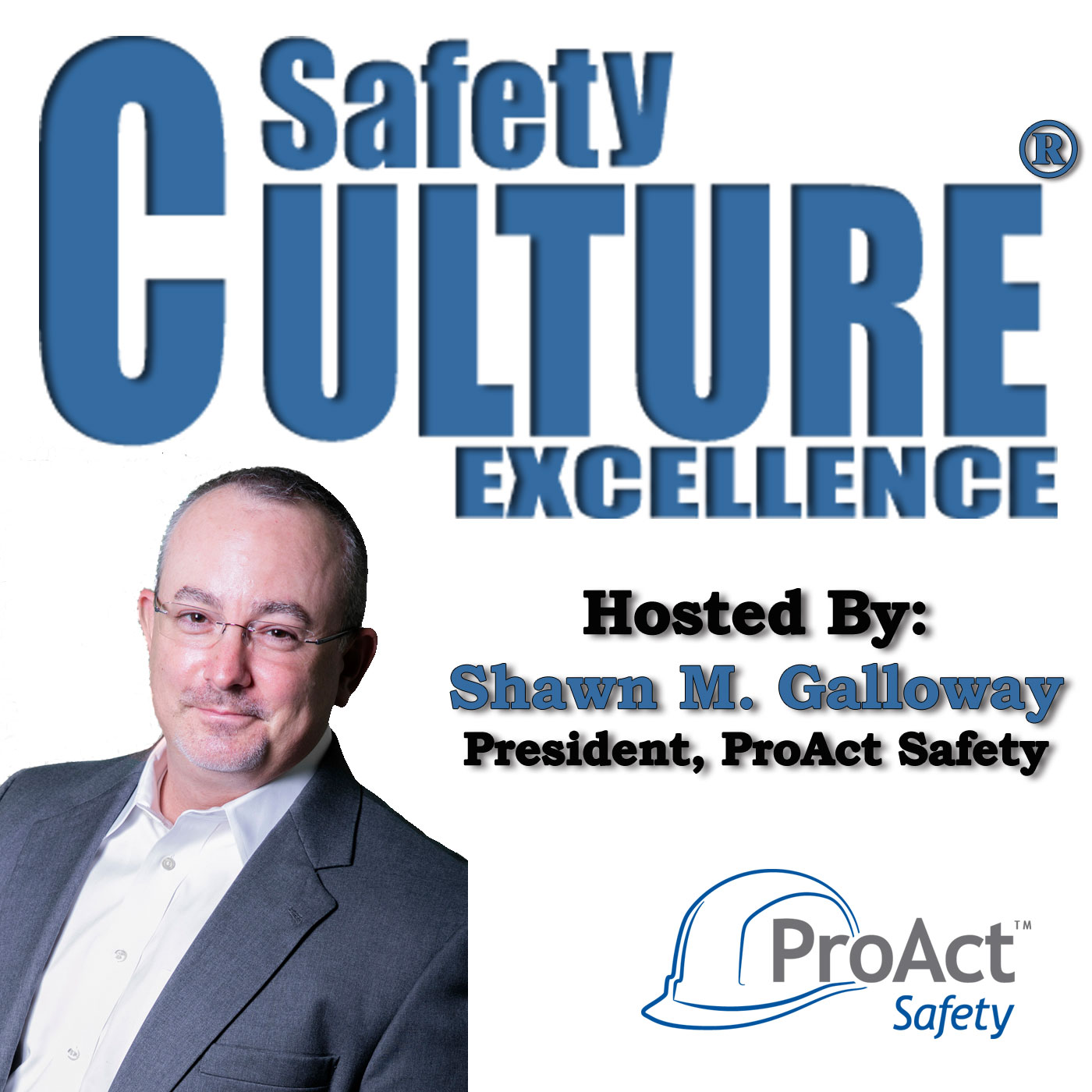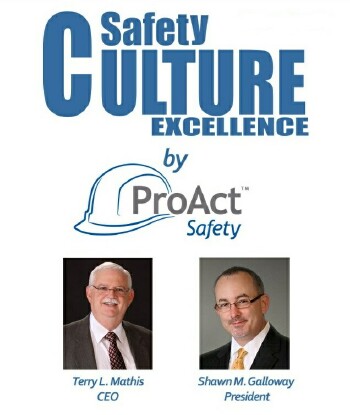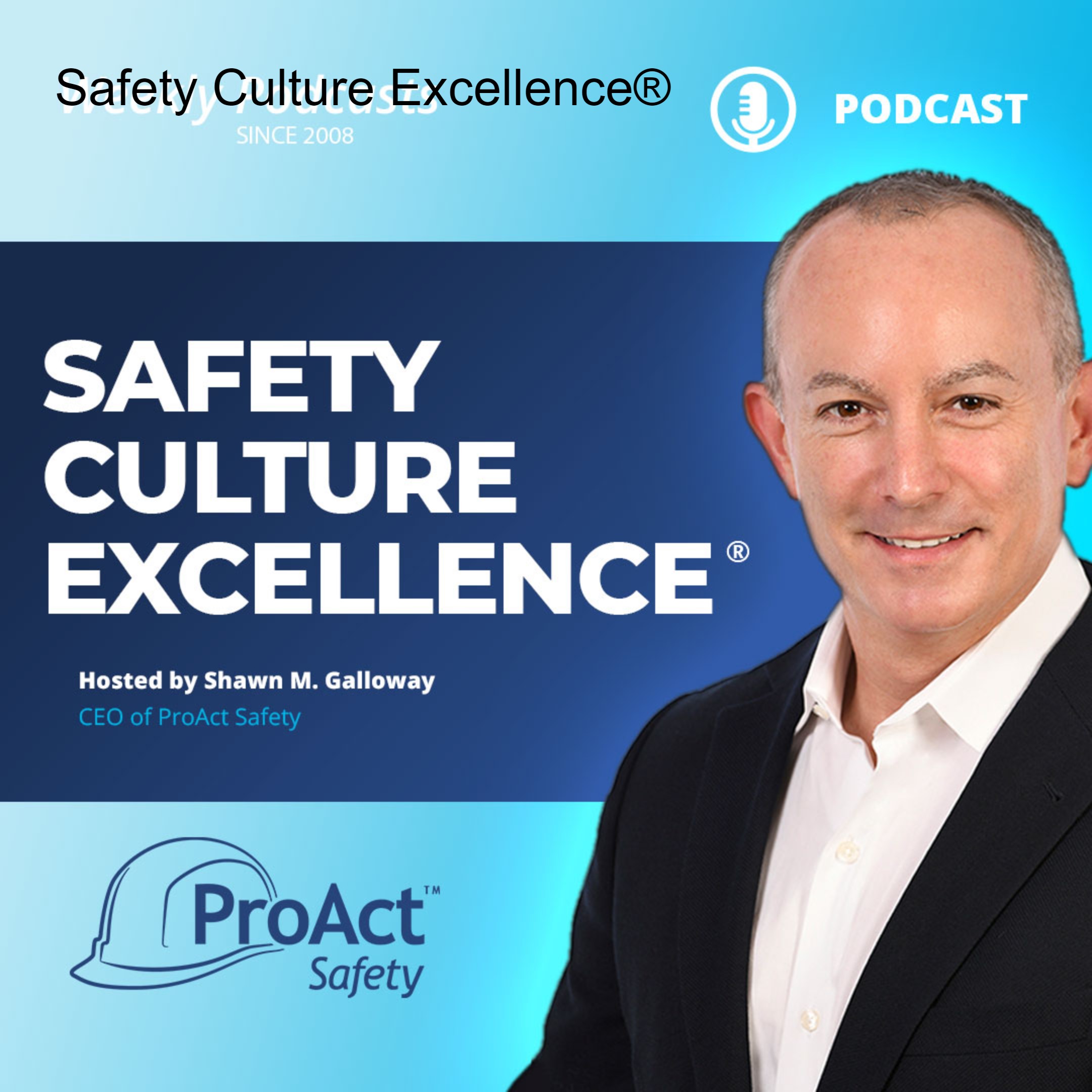Episodes

Monday Nov 14, 2016
465: Changing Safety Terminology
Monday Nov 14, 2016
Monday Nov 14, 2016
Hello, welcome to this week’s podcast, brought to you by ProAct Safety, the leader in the world of safety excellence. For more information on this topic, or how we help lead individuals and organizations towards excellence in performance and culture, please visit us at www.ProActSafety.com
I hope you enjoy the podcast this week. If you would like access to archived podcasts dating back to January 2008, please visit the store section at ProActSafety.com. For additional insights (articles, blogs, books, speaking locations, webinars and videos) visit www.ProActSafety.com/Insights
Have a great week!
Shawn M. Galloway
ProAct Safety


Monday Oct 24, 2016
462: Are Safety and Productivity Enemies
Monday Oct 24, 2016
Monday Oct 24, 2016
Hello, welcome to this week’s podcast, brought to you by ProAct Safety, the leader in the world of safety excellence. For more information on this topic, or how we help lead individuals and organizations towards excellence in performance and culture, please visit us at www.ProActSafety.com
I hope you enjoy the podcast this week. If you would like access to archived podcasts dating back to January 2008, please visit the store section at ProActSafety.com. For additional insights (articles, blogs, books, speaking locations, webinars and videos) visit www.ProActSafety.com/Insights
Have a great week!
Shawn M. Galloway
ProAct Safety


Monday Oct 10, 2016
460: Making Safety Portable
Monday Oct 10, 2016
Monday Oct 10, 2016
Hello, welcome to this week’s podcast, brought to you by ProAct Safety, the leader in the world of safety excellence. For more information on this topic, or how we help lead individuals and organizations towards excellence in performance and culture, please visit us at www.ProActSafety.com
I hope you enjoy the podcast this week. If you would like access to archived podcasts dating back to January 2008, please visit the store section at ProActSafety.com. For additional insights (articles, blogs, books, speaking locations, webinars and videos) visit www.ProActSafety.com/Insights
Have a great week!
Shawn M. Galloway
ProAct Safety


Monday Sep 26, 2016
458: Is Your Safety Program Viral or Vile
Monday Sep 26, 2016
Monday Sep 26, 2016
Hello, welcome to this week’s podcast, brought to you by ProAct Safety, the leader in the world of safety excellence. For more information on this topic, or how we help lead individuals and organizations towards excellence in performance and culture, please visit us at www.ProActSafety.com
I hope you enjoy the podcast this week. If you would like access to archived podcasts dating back to January 2008, please visit the store section at ProActSafety.com. For additional insights (articles, blogs, books, speaking locations, webinars and videos) visit www.ProActSafety.com/Insights
Have a great week!
Shawn M. Galloway
ProAct Safety


Monday May 16, 2016
440: Five Reasons You Have Undesired Performance
Monday May 16, 2016
Monday May 16, 2016
Hello, welcome to this week’s podcast, brought to you by ProAct Safety, the leader in the world of safety excellence. For more information on this topic, or how we help lead individuals and organizations towards excellence in performance and culture, please visit us at www.ProActSafety.com
I hope you enjoy the podcast this week. If you would like access to archived podcasts dating back to January 2008, please visit the store section at ProActSafety.com. For more detailed strategies to achieve and sustain excellence in performance and culture, pick up a copy of our book, STEPS to Safety Culture Excellence - http://proactsafety.com/insights/steps-to-safety-culture-excellence
Have a great week!
Shawn M. Galloway
ProAct Safety


Monday May 02, 2016
438: The True Goal of an Effective Safety Program
Monday May 02, 2016
Monday May 02, 2016
Hello, welcome to this week’s podcast, brought to you by ProAct Safety, the leader in the world of safety excellence. For more information on this topic, or how we help lead individuals and organizations towards excellence in performance and culture, please visit us at www.ProActSafety.com
I hope you enjoy the podcast this week. If you would like access to archived podcasts dating back to January 2008, please visit the store section at ProActSafety.com. For more detailed strategies to achieve and sustain excellence in performance and culture, pick up a copy of our book, STEPS to Safety Culture Excellence - http://proactsafety.com/insights/steps-to-safety-culture-excellence
Have a great week!
Shawn M. Galloway
ProAct Safety


Monday Jan 04, 2016
Monday Jan 04, 2016
Hello, welcome to this week’s podcast, brought to you by ProAct Safety, the leader in the world of safety excellence. For more information on this topic, or how we help lead individuals and organizations towards excellence in performance and culture, please visit us at www.ProActSafety.com
I hope you enjoy the podcast this week. If you would like access to archived podcasts dating back to January 2008, please visit the store section at ProActSafety.com. For more detailed strategies to achieve and sustain excellence in performance and culture, pick up a copy of our book, STEPS to Safety Culture Excellence - http://proactsafety.com/insights/steps-to-safety-culture-excellence
Have a great week!
Shawn M. Galloway
ProAct Safety


Monday Dec 07, 2015
417: 4 Types of Safety Behaviours (Culture Shock Video)
Monday Dec 07, 2015
Monday Dec 07, 2015
Hello, welcome to this week’s podcast, brought to you by ProAct Safety, the leader in the world of safety excellence. For more information on this topic, or how we help lead individuals and organizations towards excellence in performance and culture, please visit us at www.ProActSafety.com
I hope you enjoy the podcast this week. If you would like access to archived podcasts dating back to January 2008, please visit the store section at ProActSafety.com. For more detailed strategies to achieve and sustain excellence in performance and culture, pick up a copy of our book, STEPS to Safety Culture Excellence - http://proactsafety.com/insights/steps-to-safety-culture-excellence
Have a great week!
Shawn M. Galloway
ProAct Safety


Monday Nov 30, 2015
416: How Portable Are Your Safety Efforts?
Monday Nov 30, 2015
Monday Nov 30, 2015
Hello, welcome to this week’s podcast, brought to you by ProAct Safety, the leader in the world of safety excellence. For more information on this topic, or how we help lead individuals and organizations towards excellence in performance and culture, please visit us at www.ProActSafety.com
I hope you enjoy the podcast this week. If you would like access to archived podcasts dating back to January 2008, please visit the store section at ProActSafety.com. For more detailed strategies to achieve and sustain excellence in performance and culture, pick up a copy of our book, STEPS to Safety Culture Excellence - http://proactsafety.com/insights/steps-to-safety-culture-excellence
Have a great week!
Shawn M. Galloway
ProAct Safety


Monday May 18, 2015
388 - The Only Way Safety Will Continuously Improve
Monday May 18, 2015
Monday May 18, 2015
Greetings everyone, this podcast recorded while in Wichita Falls, TX. I’d like to share an article I wrote that was published in OH&S Magazine. The published article can either be found on the magazine’s website or under Insights at www.ProActSafety.com.
I hope you enjoy the podcast this week. If you would like access to archived podcasts (older than 90 days – dating back to January 2008) please visit www.ProActSafety.com/Store. For more detailed strategies to achieve and sustain excellence in performance and culture, pick up a copy of our book, STEPS to Safety Culture Excellence - http://proactsafety.com/insights/steps-to-safety-culture-excellence
Have a great week!
Shawn M. Galloway
ProAct Safety
Version: 20241125

